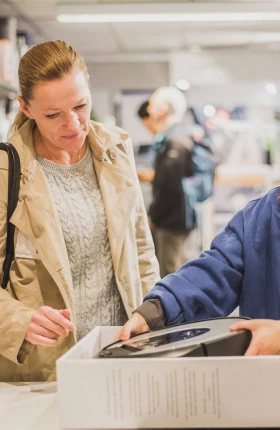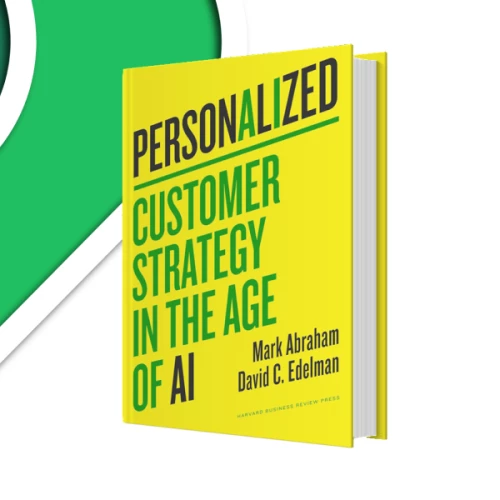From fragmented frontline roles to AI-driven discovery, Retail Predictions 2026 reveals how automation, security, and shifting notions of value are fundamentally reshaping how retailers compete and win.
Featured Insights
The Future of Retail

Article
January 2, 2026
Video
The Big Trends—and Opportunities—in Retail
Omnichannel, retail media, and personalization are the key trends for building winning value propositions, say Jose Antonio Fernández Garza-Lagüera of FEMSA and BCG’s Nathan Shenck.

Article
June 13, 2024
To successfully launch a niche online marketplace related to their standard offering, retailers have to offer an excellent experience for both consumers and third-party sellers.

Report
October 31, 2023
E-commerce dynamics are changing. Our global survey reveals the approaches differentiating retail and consumer packaged goods winners and laggards in today’s increasingly competitive environment.
Book
Personalized: Customer Strategy in the Age of AI
Personalization is a $2 trillion opportunity. BCG's new book offers a playbook for capturing your share of this personalization prize in the retail industry.
Advanced Analytics, AI, and Digital

Article
November 11, 2025
AI is upending the consumer journey. AI platforms like ChatGPT, Google’s AI Mode, and Perplexity don’t just browse—they recommend products and allow consumers to buy goods directly.

Article
September 30, 2025
Suppliers change terms—especially prices—faster than many retailers can keep up. But GenAI is leveling the playing field by generating actionable, data-driven insights.

Article
June 25, 2025
Traditional retailers are gaining strength by investing heavily in data-driven business platforms that enhance the consumer experience and drive strong financial performance.

Report
April 17, 2024
Innovative retail leaders invest more in creative endeavors and gain higher returns as a result, according to new research from BCG and the World Retail Congress.

Article
April 16, 2024
Retailers are increasingly using AI-powered solutions and dynamic pricing models to outperform rivals that rely on traditional tools and approaches.

Article
September 14, 2021
There’s gold at the end of the personalization rainbow. To get it, retailers need to focus on the customer experience, technology, and operating models.
Weekly Insights Subscription
Stay ahead with BCG insights on the retail industry
Fashion Industry

Article
October 29, 2025
Women’s Wear Daily and Boston Consulting Group recently set out to explore what really matters to young consumers, and how leading brands are adapting to win over Fashion’s Next Gen.

Report
October 9, 2025
A report by BCG and Vestiaire Collective, based on a survey of 7,800 consumers, shows that secondhand is now firmly embedded in how people shop.

Article
August 12, 2025
The world discards 120 million metric tons of clothes a year. A circular economy capable of reusing more of that waste would benefit the industry and the planet.

Report
February 13, 2025
How can fashion brands drive adoption to unlock the benefits of next-gen materials? A report by Fashion for Good and BCG provides a blueprint.
Video
June 21, 2023
Outfitting the Fashion Industry for Generative AI and Sustainability
Craig Brommers, American Eagle's chief marketing officer, discusses how brands can sustain real, authentic creative qualities and continue to pursue sustainability.
Follow BCG on Consumer on LinkedIn
Retailers today must optimize performance, tap into new opportunities and transform to meet consumers demands. Follow BCG on Consumer on LinkedIn for the latest industry insights and news.
Luxury Goods

Article
March 9, 2023
In today’s market, some highly sought secondhand models may sell for more than their listed retail value, making them an attractive investment.

Article
June 30, 2022
The industry is uniquely positioned to generate positive societal impact. Here's what it will take.

Article
September 4, 2020
Facing a disrupted consumer environment, F&L brands need to likewise disrupt their usual approach, by planning sales strategies more than a year in advance.
BCG Executive Perspectives
BCG Executive Perspectives offer insights on global topics that matter most to leaders in the public and private sectors. Explore the latest edition from our team of experts, introducing how AI will shape the future of functions.
Transformation, Growth, & Value Creators
Video
June 17, 2025
Ensuring a Successful Transformation
Dirk Van de Put of Mondelēz and BCG’s Rich Lesser discuss delivering value through transformation and the role that AI can play.
Video
April 13, 2021
Four Myths and Misunderstandings about Doing Business in Africa
International businesses are missing out by underestimating Africans, making costly assumptions about diversity, preferences, and buying power. BCG Consultant Nomava Zanazo shares what companies need to know to succeed on the continent.

Article
February 6, 2024
With parallels to the complexities of building a house, BCG’s approach to transforming a supply chain emphasizes the importance of coordination, digital enablement, and speed.

Article
April 27, 2022
Emerging from the isolation of the past 15 months, US consumers express optimism—some cautiously and others confidently—about resuming their pre-pandemic activities.
Explore more
Industry
Industry











